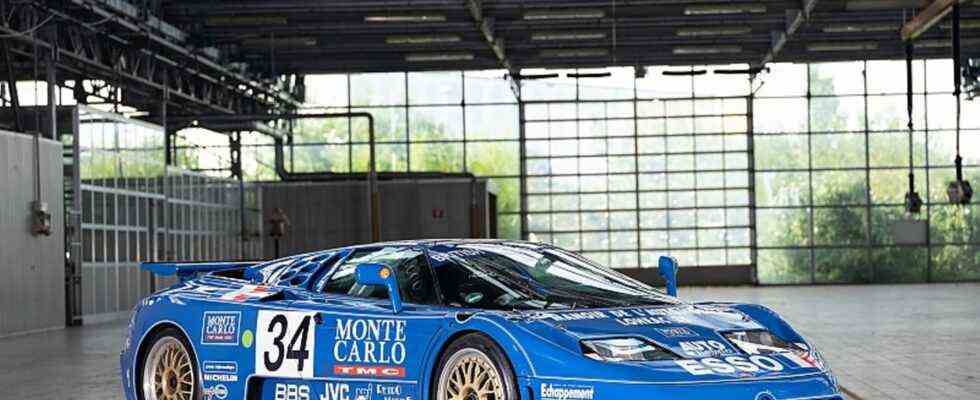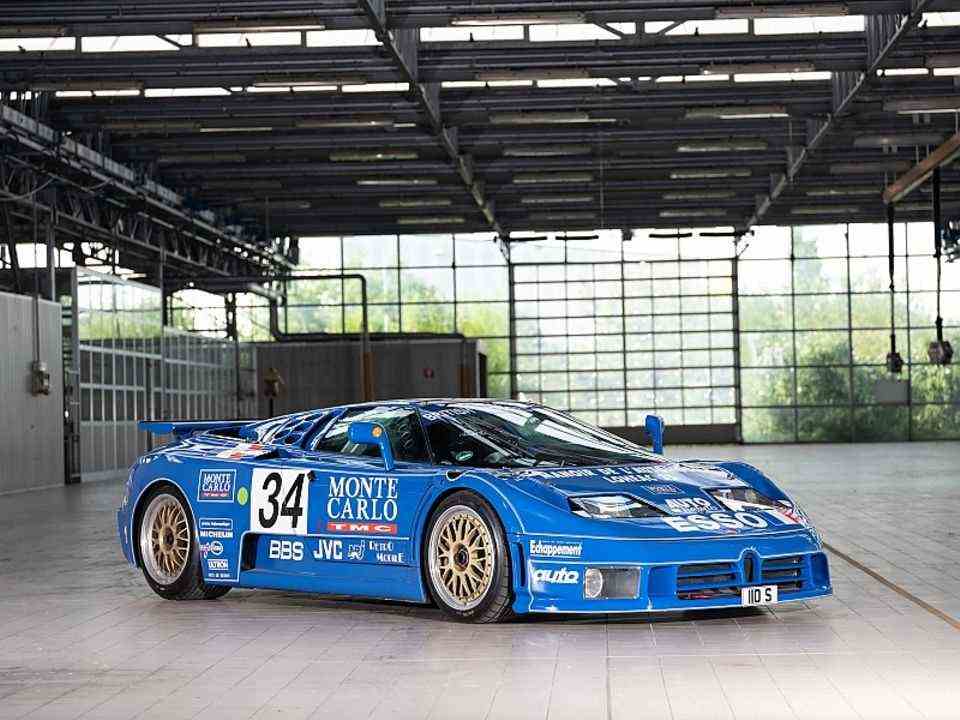These cars will become classic cars in 2022
Upcoming classics
Bugatti factory in Campogalliano / Italy
© press-inform – the press office
Old and young timers are becoming more and more popular, despite all the electrical trends. The vehicles are particularly cheap to maintain if they have an H license plate after 30 years. Some coveted models will be awarded the H in 2022. A number of super sports cars that had not existed before were particularly spectacular in 1992.
The BMW M3 has been one of the most sought-after sports cars on the market for decades. After the generation of the E30 has been on the road with an H on the license plate for several years, the successor E36 will follow in 2022. The BMW M3 E36 was offered as both a sedan and a coupe. Initially, however, there was only the two-door model, which was fueled for the first time in M history by a three-liter in-line six-cylinder with initially 286 and later up to 325 hp. If you needed more space than in the hot 3 Series Coupé, the BMW M5 was the right choice, because from 1992 the E34 generation M5 was also offered as a station wagon version for the first time.
After the new Mercedes S-Class of the opulent W140 generation had already been presented with a lot of attention in 1991, the hardly less impressive coupé of the C140 generation followed a year later. As with the previous model, the C126, six-cylinder engines were left out for the noble two-door model and the new coupé of the Swabian luxury league was only available with eight and twelve cylinders as the 500 and 600 series. Dipsticks and every conceivable comfort and safety equipment set a new standard in the car scene. On the twelve-cylinder, available for the first time in the Mercedes models of the SL, S and S Coupé series, BMW countered a performance benchmark in the 7-series of the E32 series with the 221 kW / 300 hp twelve-cylinder. From 1992 it was also available with two eight-cylinders with 3.0 and 4.0 liter cubic capacities, which were supposed to hunt down the beefy eight-cylinders from Stuttgart.
The Nissan Micra was more at home in the small car scene. With the second generation, the Micra also became a real kiss in Europe. It was powerfully slicked with four-cylinder engines from 55 to 82 hp and was built very successfully for more than ten years. The first convertible version presented in 1997/1998 was reserved for the domestic Japanese market. The Fiat Cinquecento, also newly presented in 1992, was even smaller than the Nissan Micra. The new edition of the rear engine model broke with well-known Italo conventions and not only had a new platform and axles, but also a four-cylinder at the front under the bonnet. The four-cylinder, which was only 900 ccm in size, developed just under 40 hp and ensured speedy propulsion in the city center. For some European low-cost markets there was even a 0.7-liter version with just 31 hp, which was more popular than the 54-hp top model with a displacement of 1.1 liters.
After the third-generation VW Golf celebrated its premiere in 1991, the Wolfsburg-based company added the notchback version of the Vento at the beginning of 1992, which was supposed to make customers forget the boring Jetta. The technology of the VW Vento, which was still sold as the Jetta in the USA, was largely identical to that of the VW Golf III with the exception of the trunk. This also applied to the engines and so the four-door notchback model was not only available with four-cylinder petrol engines with 1.8 and 2.0 liters displacement, but also with two 1.9-liter diesel engines and a 174 hp sports version of the Vento VR6 with one 2.8 liter six-cylinder.
The Porsche 968 was presented as early as 1991 as the modern successor to the Porsche 944, which was actually a modified 924. The 968 did not actually hit most markets until 1992 and, with its three-liter inline four-cylinder, was used to attract customers to support the ailing Porsche 911 of the 964 generation. However, the 968 was hardly a hit with the real Porsche fans, which was not only due to the front engine concept, but especially to the exclusively available four-cylinder engines, which developed 240 to just over 300 hp.
The Mazda Xedos 6, with which the Japanese wanted to move into the premium segment, was two classes above it. But in terms of design and drive, the noble Mazda models were rather boring and customers did not really accept Mazda’s premium claim. Despite the noble equipment and smooth-running six-cylinder with two liters of displacement and initially 144 hp, the Mazda Xedos was a huge blow. In the same class, Alfa Romeo tried once more to win new customers. But except in southern Europe, the new, wedge-shaped styled Alfa Romeo 155 had no chance against the volume competition from Germany, Sweden or France. In contrast to its predecessor, the Alfa 75, the new 155 was the first to have front-wheel drive and engines with four-cylinder petrol engines with an output of up to 190 hp. The new Subaru Impreza competed in the same league for the first time in 1992 and wanted to bring the sporty image of the rally world champion into everyday cars – with a unique boxer engine and all-wheel drive.
The McLaren F1, the most spectacular super sports car of its time, was also presented for the first time in 1992. Its design was just as spectacular as the V12 engine developed by BMW with 627 to 680 hp and real racing technology. The sports car, which was hardly built more than a hundred times, is now one of the most sought-after sports cars in the world and has been auctioned for more than ten million euros. However, the H mark is unlikely to be conducive to the increase in value.
His direct opponent Jaguar XK220 will also celebrate its 30th birthday next year and can look forward to a possible H-license plate on the front and rear. The name XJ220 comes from the top speed of 220 miles per hour, which was targeted at the time, although the 550 hp production version with just over 340 km / h fell short of expectations and even later special versions on the test sites could not crack the 220 mark. Even more spectacular was the Bugatti EB 110, which briefly relived the legend of the Franco-Italian brand with these spectacular super sports cars, at least until 1995. Before the McLaren F1 set the record, the 560 hp Bugatti EB 110 was briefly the fastest production car in the world and cost around 700,000 Deutschmarks.


